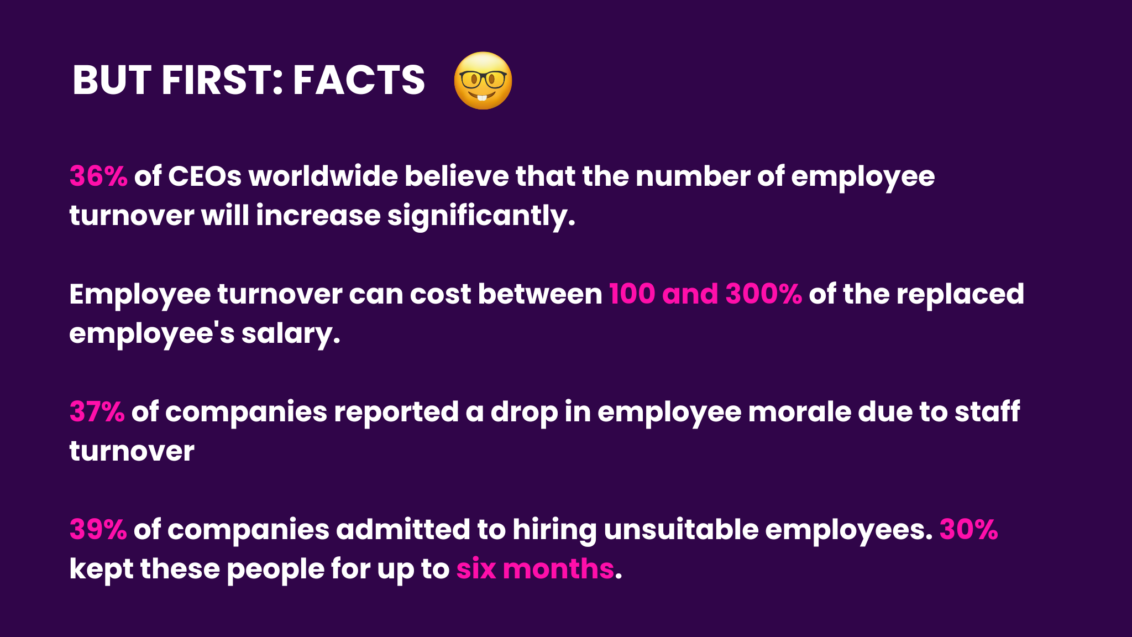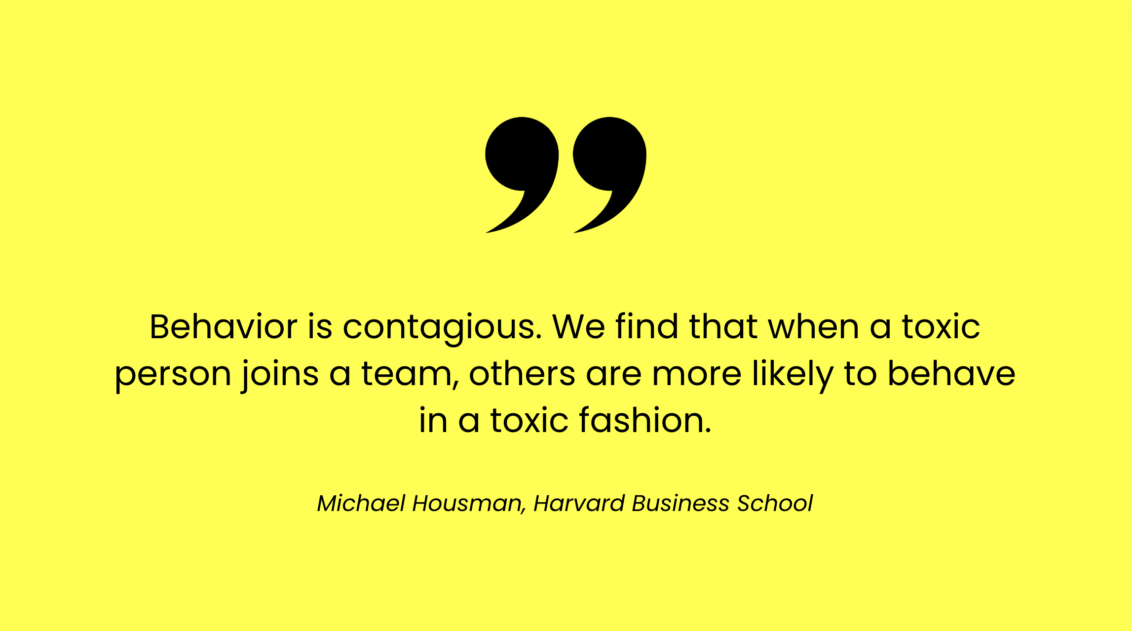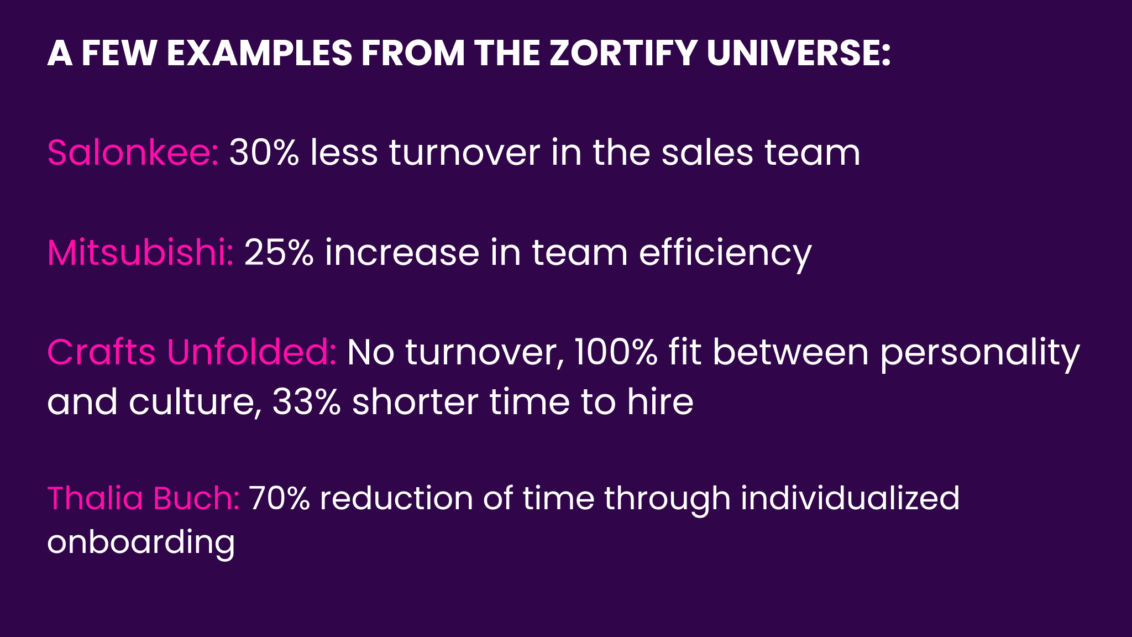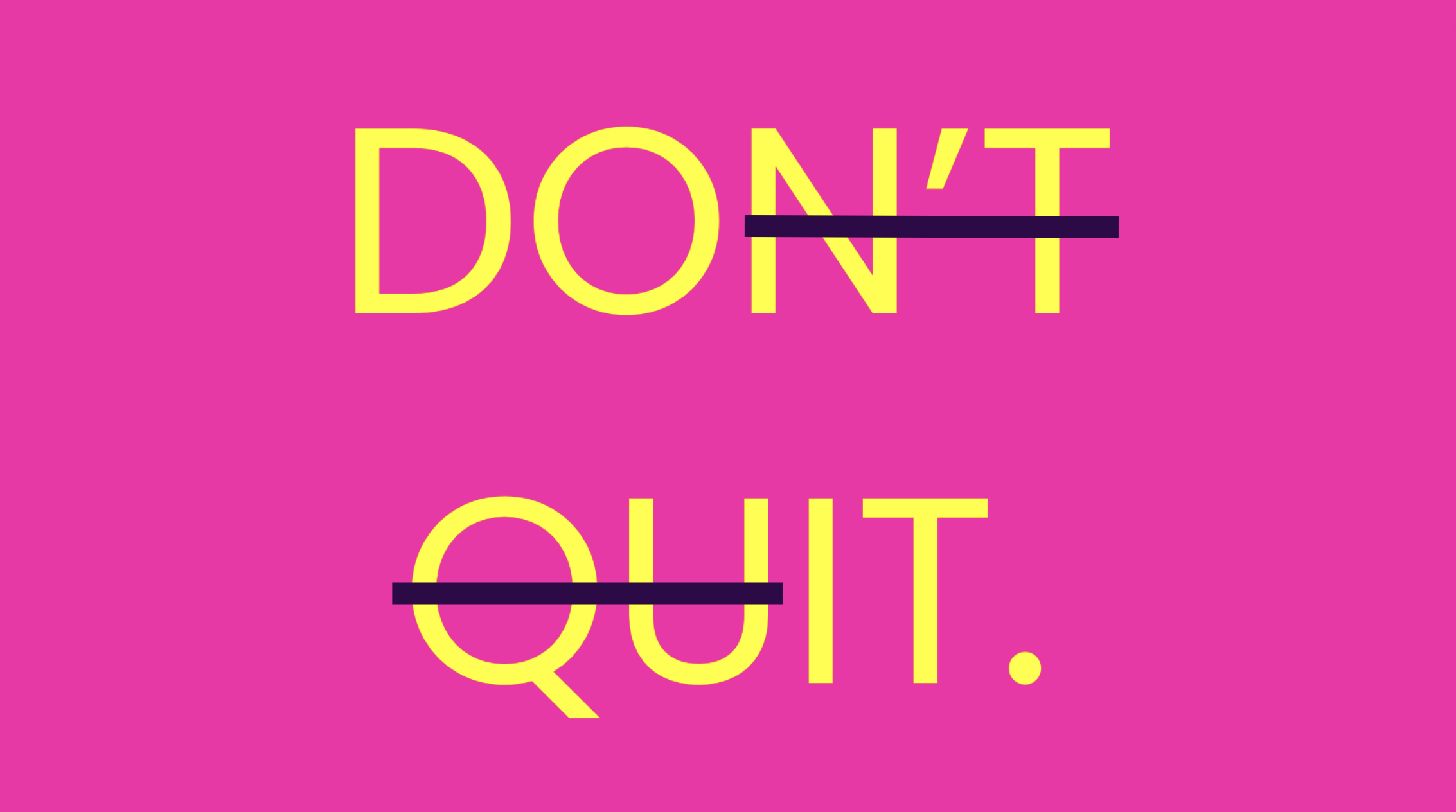How AI can save your HR budget

As most companies probably don’t have a “bad hire budget”, they should do everything they can to avoid bad hires. More and more are using AI systems to replace expensive and inefficient methods such as assessment and development centers. AI-based employee diagnostics supports HR in doing the best possible job – and sets new standards in people development at the same time.

Customized HR work: cheaper than ever before thanks to AI
Understanding and using AI systems costs money at first, of course. But this is money well spent. With the help of artificial intelligence, HR is much more likely to fill open positions with the right people and the investment in onboarding and employee development will pay off in the long term.
How is this possible?
Technological change is making affordable what until recently was expensive: making accurate predictions about who will fit a job and who will not. The more sophisticated the technology becomes, the better HR experts can do their job.
AI systems can already:
-
- scan a large number of profiles of potentially interesting talents in social networks,
- create a pool of suitable candidates for active sourcing,
- create job descriptions that suitable talents really want to read and in which they can find themselves.
Above all, however, they make assessment and development centers obsolete. These involve an average of five days’ work for several HR managers and often cost tens of thousands of euros. At the same time, the many bad hires and the growing willingness to change jobs in the workforce show that they do not bring the desired outcome. AI systems can change the system. Within minutes, they analyze the information that HR needs to pre-select candidates and reduce the risk of a “bad hire”.
How to avoid the recruiting of toxic coworkers
In order to support the final decision, AI systems can analyze not only the personality profiles of applicants but also their potential fit with regard to their future role in the team. A Harvard study shows just how important this is. According to this study, a top performer with toxic behavioral traits has a worse impact on the overall performance of the company than several employees who only perform at an average level but work well as a team.
Anyone who thinks of the obvious bully when they hear the term “toxic worker” is mistaken. Toxic employees act cleverly and often poison the atmosphere in subtle ways. To avoid this, HR managers need to be able to identify personality traits in advance (i.e. before recruitment) that are not apparent from a CV or assessment center. Using this data, they can identify likely patterns of behaviour and predict how they might affect the performance of the team and the organization as a whole

In view of the increasingly complex field of HR tasks and the limits of the human ability to analyze, it was until now impossible to meet this expectation. With the rise of AI systems, this is changing. Data-supported personality analysis will very likely quickly become the new standard in employee recruitment and development and give companies more security in uncertain times.
Minimizing risk with AI
Speaking of uncertainty: in its latest issue, the “brandeins” magazine comes to the conclusion that the slow pace of digitalization in every fourth German company is due to a lack of willingness to take risks. AI can also spark a shift in thinking here: By accelerating processes and securing decisions based on data, companies can act more courageously and flexibly.

These impressive figures are a signal to risk-averse companies to invest in their digitalization even more, as new technologies can significantly reduce risks in important areas of corporate management, such as HR work.
Conclusion
Assuming you don’t have an endless “bad hire budget”, dare to invest in AI. Start low-threshold, for example with SaaS and platform solutions. Because one thing is clear: external risks will not become less in the foreseeable future, but they will be much easier to manage with AI. Companies can use AI-supported risk management and explore new fields with the help of data. The best insurance they have is the right employees who share their goals, values and culture.
Sources:
– Thriving in an age of continuous reinvention
– Measure Workforce Resilience for Better Business Outcomes
– The real cost of employee turnover and what you can do about it
Prof. Dr. Florian Feltes
Prof. Dr. Florian Feltes is co-founder and co-CEO of zortify and a forerunner in AI-supported HR innovation. Together with his team, he develops intelligent personality diagnostics and helps companies identify the perfect candidates—without expensive assessments and without bias. His vision: a world in which every company can effortlessly form high-performance teams and create work environments that allow human potential to flourish.


Everyone wants these five colleagues in 2024

Missed the boat on AI? How companies are catching up
